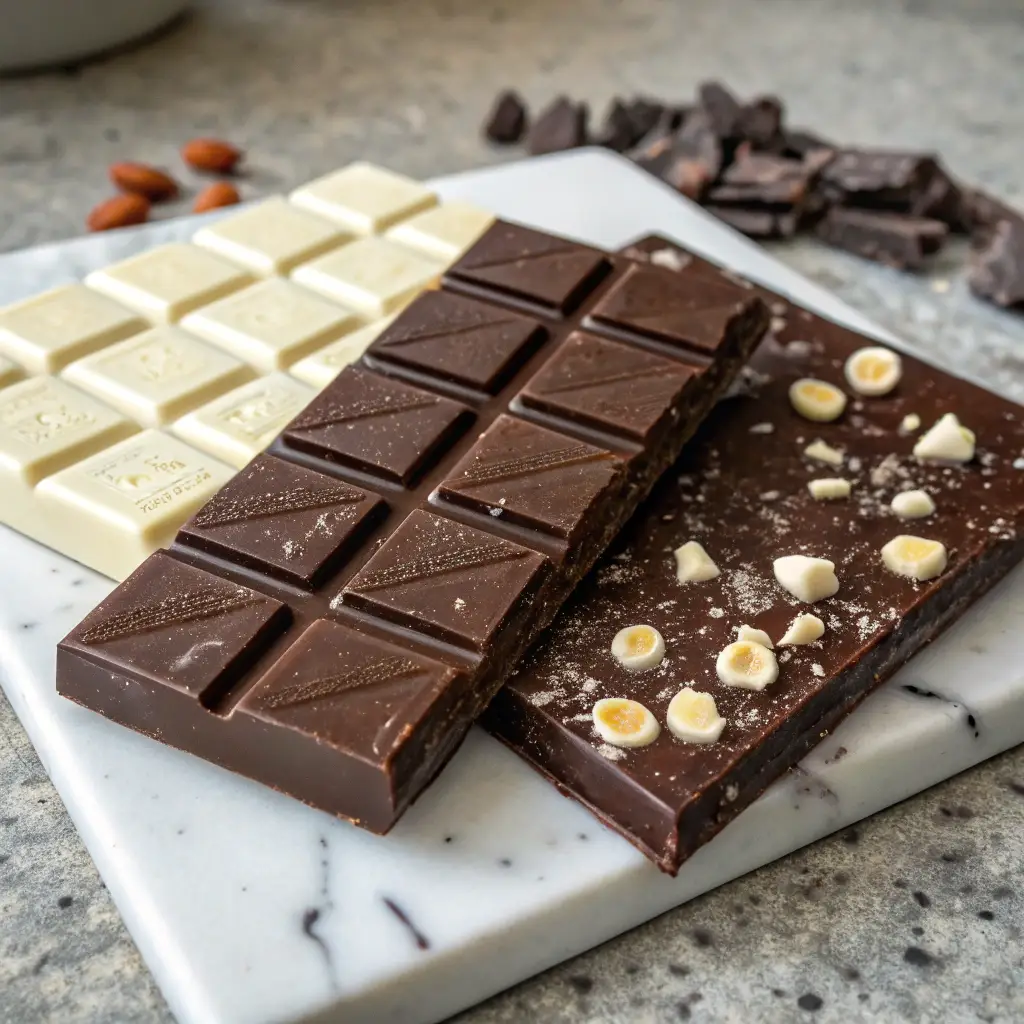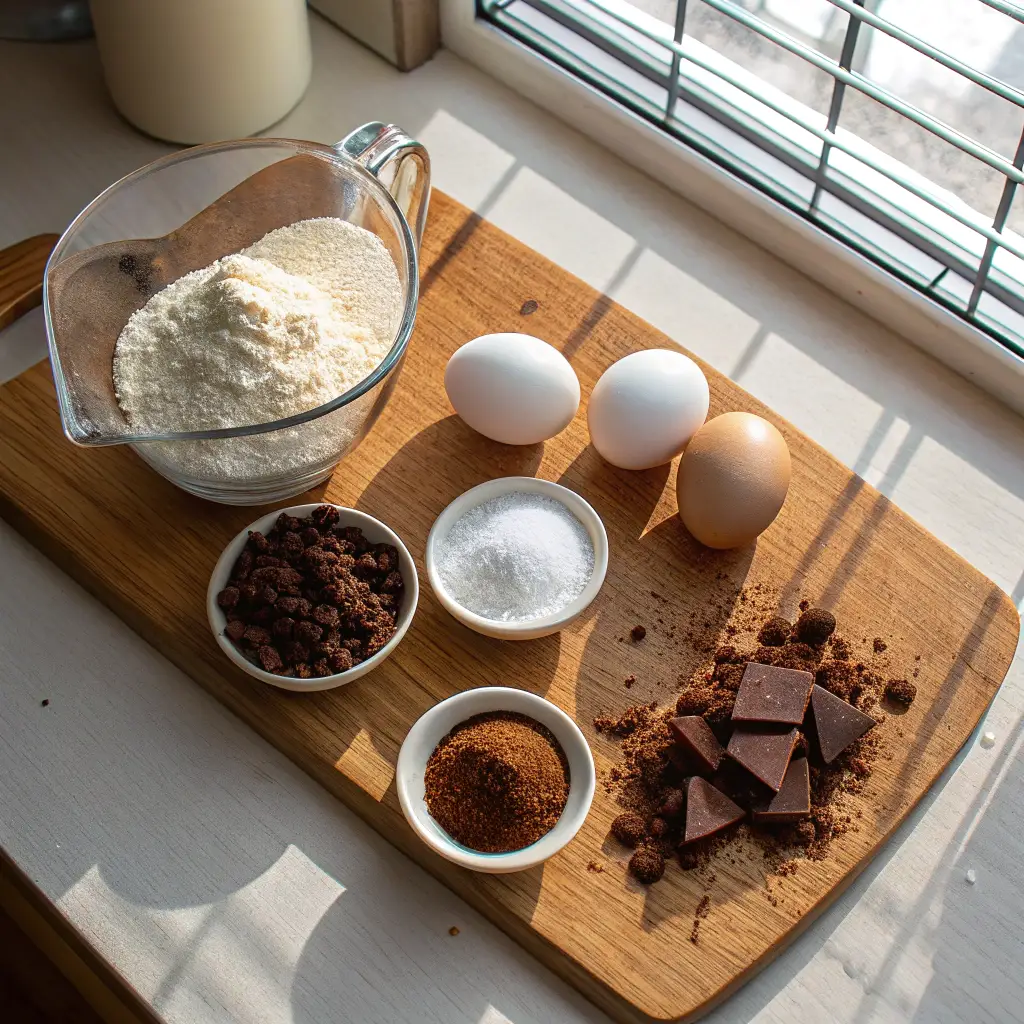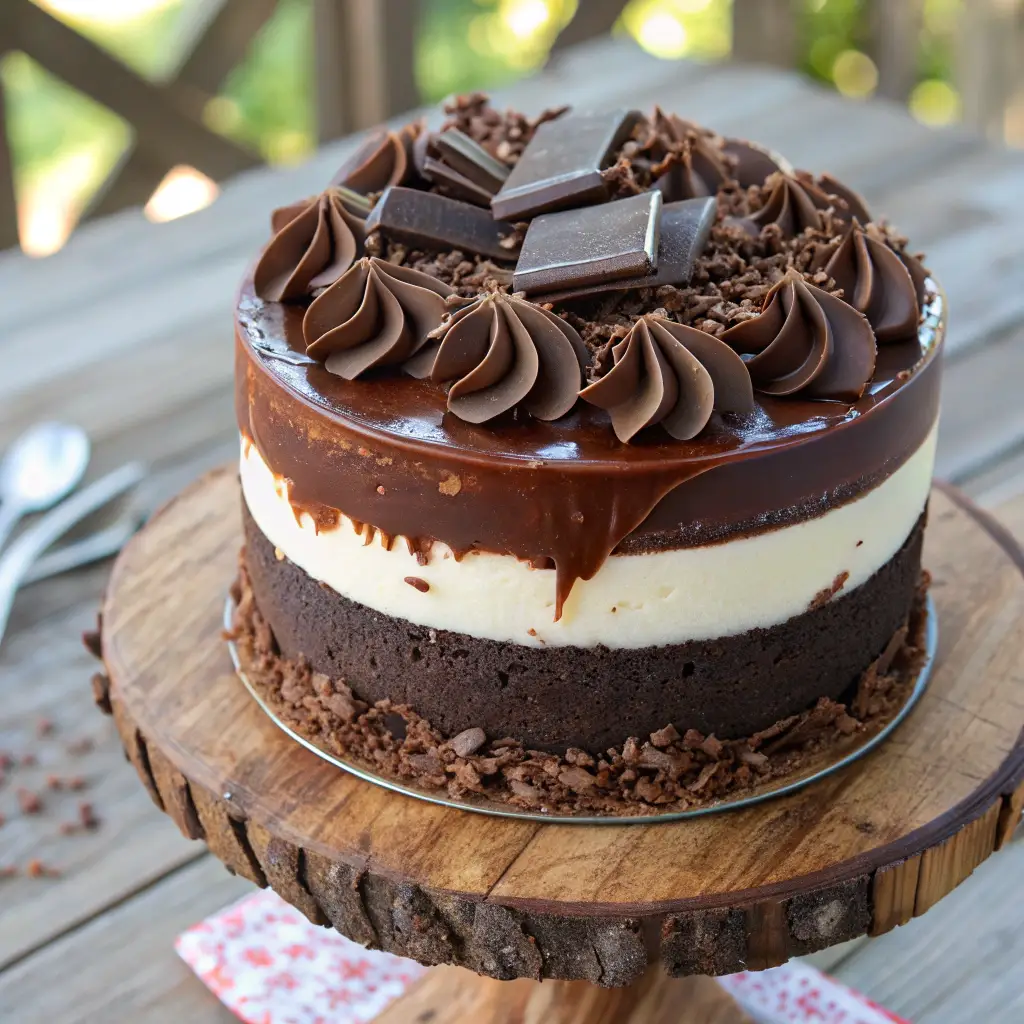Craving the most indulgent, melt-in-your-mouth chocolate experience? Then triple chocolate cake might just be your new dessert obsession. This rich, layered delight isn’t your everyday chocolate treat—it’s a full-blown chocolate celebration made with three kinds of chocolate working together to create a deep, irresistible flavor and luxurious texture.
From home bakers to pastry chefs, everyone loves the magic that happens when milk, dark, and white or semi-sweet chocolates come together in one heavenly dessert. In this comprehensive guide, you’ll learn what makes a triple chocolate cake so special, how to bake it like a pro, and how to tweak it to your taste. Whether you’re prepping for a birthday bash or want to impress at dinner, this cake is a showstopper every time.
Plus, we’ll answer your most-asked baking questions like how much batter you need for a tiered cake and whether it’s okay to substitute types of chocolate. Looking for inspiration? Try our best brownie cake recipe to warm up before diving in.
Let’s get started by breaking down what exactly a triple chocolate cake is—and why it deserves a spot in your baking rotation.
Table of Contents
PART 1: What is Triple Chocolate Cake?
The Meaning Behind the Name “Triple Chocolate”
The term “triple chocolate cake” refers to desserts made with three distinct types of chocolate ingredients, usually incorporated in layers or combined throughout the cake. Typically, these chocolates include dark, milk, and white chocolate, but some recipes switch in semi-sweet or cocoa powder to build intensity. What defines the cake isn’t just the number—it’s the way those chocolates are used in tandem to elevate richness, complexity, and overall depth.
Why Is It Called Triple Chocolate Cake?
It’s called triple chocolate because of how each chocolate adds its own voice. Dark chocolate brings intensity and bitterness. Milk chocolate softens with creaminess and sweetness. White chocolate, if used, offers vanilla notes and smooth texture. Whether in the batter, filling, frosting, or ganache, the trio creates a balance that one chocolate alone can’t match.
What Makes It Different from Regular Chocolate Cake?
Regular chocolate cake often uses just cocoa powder or a single type of melted chocolate. Triple chocolate cake layers on flavor with multiple chocolate sources in different forms—melted, chipped, grated, or whipped. This layering makes it more decadent and satisfying than standard chocolate desserts.
Check out this rich mini chocolate chip muffin recipe for a quick taste of chocolate layering done right!
PART 2: The Three Types of Chocolate in the Cake
What Are the Three Chocolates Used in Triple Chocolate Cake?

A true triple chocolate cake blends three types of chocolate to create layers of depth and decadence. The most common trio includes:
- Dark chocolate – Often used for the cake base, dark chocolate delivers rich cocoa flavor with slightly bitter undertones. It gives structure and that deep chocolatey essence.
- Milk chocolate – Typically featured in the frosting or ganache, milk chocolate brings sweetness and creaminess that mellow out the dark notes.
- White chocolate – While not technically “true” chocolate (it lacks cocoa solids), white chocolate adds a buttery, vanilla-like finish. It’s commonly used in fillings or decorative drizzles.
Some variations use semi-sweet or bittersweet chocolate in place of milk or dark, depending on preference. Cocoa powder is often added to intensify the base.
According to The Kitchn, each type of chocolate contributes uniquely to texture and flavor—dark adds intensity, milk delivers sweetness, and white lends creaminess with a hint of vanilla.
How Each Chocolate Enhances the Texture and Flavor
The combination of different chocolates isn’t just for taste—it’s for texture too. Dark chocolate firms up when cooled, giving body to the cake. Milk chocolate softens the texture, especially in frostings or mousses, adding creaminess. White chocolate, with its high cocoa butter content, makes for ultra-smooth glazes and fillings.
Using three types creates balance. You get bitter, sweet, and mellow—all in one bite. This interplay makes triple chocolate cake so addictive and satisfying.
Whether layered or swirled together, the goal is complexity. You’re not just tasting “chocolate”—you’re tasting an orchestra of flavors built on the full spectrum of cocoa.
PART 3: Popular Triple Chocolate Cake Recipes
Classic Moist Triple Chocolate Cake Recipe
This recipe is the gold standard. It includes dark chocolate cake layers filled with milk chocolate ganache and topped with whipped white chocolate frosting. The combination of textures—dense cake, silky ganache, fluffy topping—makes every forkful an experience.
The base uses Dutch-processed cocoa powder and melted dark chocolate for intensity. Buttermilk or sour cream is added for moisture and richness. Eggs and oil help keep the crumb tender.
Bake the batter in two or three 8-inch round pans, and let cool fully before layering with the ganache. Once stacked, spread the white chocolate frosting generously on top and around the sides.
Best No-Bake Triple Chocolate Variations
Not into baking? You can still enjoy the decadence. Try a no-bake triple chocolate cheesecake. The crust is made from crushed chocolate cookies and butter, the filling includes layers of milk, dark, and white chocolate ganache chilled into a mousse-like texture.
Another hit? Triple chocolate mousse cups. Layer each chocolate into small jars and chill. They’re portioned, elegant, and require zero oven time.
These recipes are perfect when you’re short on time but still want to impress. They also travel well, making them party favorites or holiday go-tos.
PART 4: Ingredients Breakdown & Their Role
Key Dry Ingredients and Why They Matter

Flour, sugar, cocoa powder, and baking agents form the foundation of triple chocolate cake. All-purpose flour provides structure, while granulated sugar sweetens and helps keep the cake moist. Cocoa powder intensifies the chocolate profile and blends smoothly into the dry mix. Use Dutch-processed cocoa for deeper flavor and a darker color.
Baking soda and baking powder are leavening agents that create rise and fluffiness. A pinch of salt balances the sweetness and enhances all chocolate notes.
Moisture Boosters: From Buttermilk to Yogurt
Moisture is everything in a cake this rich. That’s why buttermilk or sour cream is often added—they react with baking soda to tenderize the crumb and keep it ultra-moist. Oil is another hero ingredient. Unlike butter, oil remains liquid at room temp, ensuring a soft, melt-in-your-mouth texture for days.
Eggs bind everything and add richness, while hot coffee or boiling water “blooms” the cocoa, unlocking a deeper chocolate flavor. Don’t skip this step—it’s a secret weapon for many pro bakers.
Why Use Three Types of Chocolate Separately
Using chocolate in multiple forms—melted into the batter, folded into ganache, whipped into frosting—not only layers the flavor but also creates varying textures. Each type of chocolate plays a distinct role in building complexity and elevating the cake into something unforgettable.
PART 5: Baking Techniques for the Perfect Triple Chocolate Cake
Mixing Methods: Creaming vs. One-Bowl
For ultra-light cakes, many bakers cream butter and sugar first. But for denser, more decadent cakes like triple chocolate, a one-bowl method using oil works wonders. Just mix wet and dry separately, then combine. This reduces gluten development and keeps the cake soft.
Use room-temperature ingredients to ensure a smooth, even batter. Overmixing creates toughness—stir only until combined.
How to Prevent Overbaking or Dryness
A moist triple chocolate cake depends on baking it just right. Preheat your oven properly and use an oven thermometer to avoid hotspots. Always check doneness 5 minutes early—insert a toothpick in the center. It should come out with moist crumbs, not clean.
Use cake strips or a water bath to prevent doming and promote even baking. These tips are especially important when stacking or tiering.
Tips for Layering and Tiering Cakes
Want to go three tiers? You’ll need about 6 to 7 cups of batter per 8-inch layer. Multiply that for extra tiers, or consider smaller pans.
Cool each layer completely before stacking to prevent slipping. Level the cakes with a serrated knife or cake leveler, then apply a crumb coat before final frosting. For stability, add dowels or straws if you’re going tall.
PART 6: Decorating and Frosting a Triple Chocolate Cake
Best Frosting Options for Rich Chocolate Cakes

The frosting is where creativity shines. Options include:
- Milk chocolate buttercream for classic sweetness
- White chocolate whipped frosting for lightness
- Dark chocolate ganache for bold elegance
Mix and match for drama—try a dark exterior with a surprise white chocolate swirl inside.
Chocolate Ganache, Shavings, and Drizzles
Ganache is a favorite finish for triple chocolate cakes. It’s silky, glossy, and sets beautifully. Use a 1:1 ratio of cream to chocolate for pouring. Add chocolate curls, shavings, or sprinkles for extra flair.
If you’re hosting, a drizzle of warm ganache on cold cake adds that restaurant-worthy “wow” moment.
How to Use Chocolate Layers as Decoration
For visual impact, pipe alternating layers of frosting between cake tiers. Use chocolate shards or bars as toppers. Want elegance? Dust the cake with cocoa powder or gold leaf.
You can also create patterns with melted chocolate piped onto parchment, cooled, and transferred as edible art.
PART 7: Common Mistakes and Troubleshooting
Why Your Cake Might Be Too Dense or Too Dry
One of the biggest letdowns? Cutting into your triple chocolate cake and finding it dry. This usually comes down to overbaking, using too much flour, or not enough moisture in the batter. Always spoon flour into your measuring cup rather than scooping to avoid packing in too much.
Too dense? You may have overmixed the batter or used cold ingredients. Cold eggs and dairy can cause separation, while over-stirring activates gluten, making the cake tough.
How to Fix a Broken Ganache or Overbaked Cake
Ganache giving you grief? If it splits or looks oily, try warming it gently over a double boiler and whisking in a bit of warm cream slowly until it smooths out. If your cake is already overbaked, brushing layers with simple syrup can bring back some moisture.
Avoiding Flavor Overload or Bitterness
Using multiple types of chocolate can sometimes push the cake over the edge into bitterness, especially if you’re heavy-handed with dark cocoa. The fix? Balance it with sweet notes—like a milk chocolate frosting or a light white chocolate mousse.
Also, don’t go overboard with salt. A pinch enhances flavor. Too much? It’ll ruin the balance. Taste your ganache and fillings as you go—it’s easier to adjust before assembling than after.
Baking is both art and science, but small adjustments make a world of difference.
FAQs
Why is it called triple chocolate cake?
Because it features three types of chocolate—typically dark, milk, and white—used in different layers and forms such as batter, frosting, and ganache.
What are the three chocolates in triple chocolate?
Usually dark chocolate for depth, milk chocolate for sweetness, and white chocolate for smooth, creamy contrast. Some variations swap in cocoa powder or semi-sweet chocolate.
What is the world’s most famous chocolate cake?
That honor often goes to the Sachertorte, a Viennese classic made with dense chocolate cake, apricot jam, and a dark chocolate glaze. But American-style triple chocolate cake is a close contender for the “richest” title.
How much batter do I need for a 3-tier cake?
You’ll need about 6 to 7 cups of batter per 8-inch round. For a 3-tier cake with 8″, 6″, and 4″ layers, aim for 12 to 15 cups total, depending on desired thickness.
Can I use white chocolate instead of milk chocolate?
Yes—but be aware white chocolate is much sweeter and contains no cocoa solids. It’s best used for mousse or drizzle rather than the main filling.
Conclusion
Triple chocolate cake isn’t just a dessert—it’s an experience. With its rich layers, silky textures, and blend of three distinct chocolates, it’s a centerpiece for any celebration. Whether you go classic or experiment with new twists, you’re guaranteed a crowd-pleaser every time.
Serve it chilled for denser texture or slightly warm with a scoop of vanilla ice cream for contrast. Hosting a party? Add raspberries or a dusting of powdered sugar for that elegant touch.
Need more sweet ideas? Don’t miss our top dessert bars like this one that are perfect for chocolate lovers.
Make it once, and this cake will likely earn a permanent spot in your baking rotation. It’s rich. It’s beautiful. It’s what every chocolate cake dreams of becoming.

